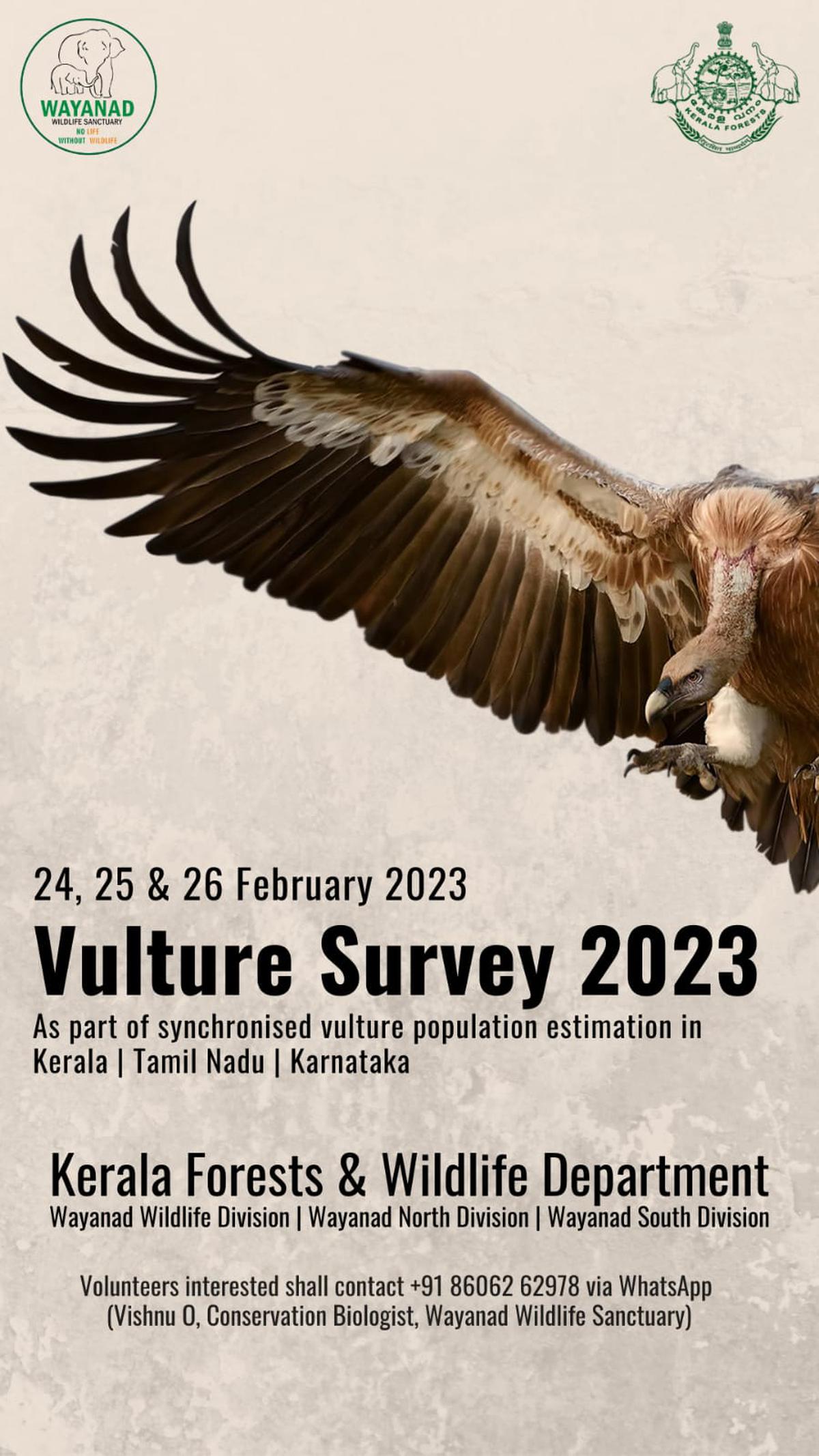White-tailed and long-billed vultures were sighted at Sigur in Mudumalai Tiger Reserve buffer zone during the last bird survey. Photo Credit: Satyamurthy M
Kerala Forest and Wildlife Department, along with their counterparts Tamil Nadu And Karnatakais preparing to conduct the first synchronized vulture survey in selected areas of the Western Ghats on 24, 25 and 26 February.
Read this also | Why vultures are important to protect nature
need for synchronization
“Every year the forest departments in the three states were conducting separate surveys at different times to calculate the remaining vulture population in South India,” says Dinesh Kumar, additional deputy conservator, Wayanad Wildlife Sanctuary. But this often resulted in double counts of avian populations because the surveys were conducted at different times, he said.
But he said a tripartite coordination meeting held at Mudumalai Tiger Reserve in Tamil Nadu two weeks ago decided to conduct the first synchronized vulture survey in the Western Ghats to avoid duplication.
The survey will be conducted simultaneously in three forest divisions, including Wayanad Wildlife Sanctuary and South and North forest divisions. It will be conducted after dividing the Wayanad landscape, where bird species were frequently sighted, into 10 locations. Each location will be monitored by a five-member team, which will include a vulture expert; A forest beat officer, one or two volunteers and a forest guard, he said.
Wayanad Wildlife Sanctuary

The Wayanad Wildlife Sanctuary, adjacent to the tiger reserves of Nagarhole and Bandipur in Karnataka and Mudumalai in Tamil Nadu, is the only area where vultures thrive in the state. About 120-150 white-tailed vultures and less than 25 red-headed vultures live in the sanctuary. Occasional sightings of long-billed vultures have also been reported in the sanctuary.
Read this also |Kerala to have its own regional red list of birds
Vultures suffered a catastrophic population decline during the 2000s after the species was exposed to diclofenac, an anti-inflammatory drug used in cattle as a pain reliever. By the end of the nineties, there were about 40 million white-tailed vultures in South Asia. But the population has dwindled to less than 10,000.
The reason for the survival of the population of Wayanad is that they were never exposed to the drug.